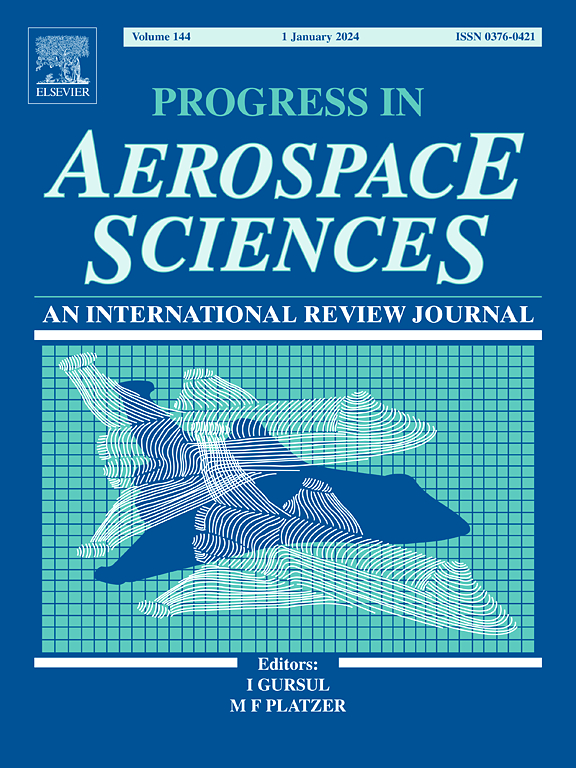微型昆虫飞行的空气动力学
IF 11.5
1区 工程技术
Q1 ENGINEERING, AEROSPACE
引用次数: 0
摘要
目前人类已知的动力飞行最小的例子是微型昆虫,它们的翅膀长度通常不超过1毫米。在这个区域飞行的特征是雷诺数为10,这意味着粘性流动的影响更加明显,因此,代表性的升阻比非常低。最值得注意的是,在小型尺度上,昆虫的翅膀由连续的膜组成,而主要由刚毛附属物组成。然而,对于刚毛翼的结构安排如何与空气动力学相互作用,人们仍然知之甚少。除了它们独特的翅膀形态外,微型昆虫的翅膀运动学也很独特。飞行的经典特征是通过升力作为抵消重量的主要成分,而微型昆虫则使用游泳般的拍打外形,其中阻力在对抗重力方面起着明显更明显的作用。相对于更广泛的昆虫空气动力学领域,微型领域最近才开始受到空气动力学家的广泛关注,然而,发展我们在微型领域的理解提供了一个机会,以提高我们的能力,为未来的微型飞行机器人的设计提供信息。为此,本审查的目的是整理迄今为止取得的进展,以便产生一个关于我们目前对微型领域飞行的理解的观点。本文章由计算机程序翻译,如有差异,请以英文原文为准。
The aerodynamics of miniature insect flight
The smallest example of powered flight currently known to humans is that of miniature insects, with wing lengths typically no greater than 1 mm. Flight in this domain is characterised by Reynolds numbers of the order of 10, meaning that viscous flow effects are more pronounced and, consequently, representative lift-to-drag ratios are significantly low. Most notably, at miniature scales, there is a transition from insects with wings made of continuous membranes to wings predominantly made up of bristled appendages. Yet, there remains very little understanding of how the structural arrangement of bristled wings interacts with the aerodynamics. In addition to their unique wing morphologies, the wing kinematics employed by miniature insects are also distinct. While flight is classically characterised via a lift force as the primary component for counteracting weight, miniature insects use swimming-like flapping profiles in which drag plays a distinctly more pronounced role in opposing gravity. Relative to the broader field of insect aerodynamics, the miniature domain has only recently begun to receive widespread attention from aerodynamicists, yet developing our understanding in the miniature field provides an opportunity to advance our capacity to inform the future design of miniature flying robots. To that end, the purpose of this review is to collate together the progress made thus far, in order to generate a perspective with regards to our current understanding of flight in the miniature domain.
求助全文
通过发布文献求助,成功后即可免费获取论文全文。
去求助
来源期刊

Progress in Aerospace Sciences
工程技术-工程:宇航
CiteScore
20.20
自引率
3.10%
发文量
41
审稿时长
5 months
期刊介绍:
"Progress in Aerospace Sciences" is a prestigious international review journal focusing on research in aerospace sciences and its applications in research organizations, industry, and universities. The journal aims to appeal to a wide range of readers and provide valuable information.
The primary content of the journal consists of specially commissioned review articles. These articles serve to collate the latest advancements in the expansive field of aerospace sciences. Unlike other journals, there are no restrictions on the length of papers. Authors are encouraged to furnish specialist readers with a clear and concise summary of recent work, while also providing enough detail for general aerospace readers to stay updated on developments in fields beyond their own expertise.
 求助内容:
求助内容: 应助结果提醒方式:
应助结果提醒方式:


